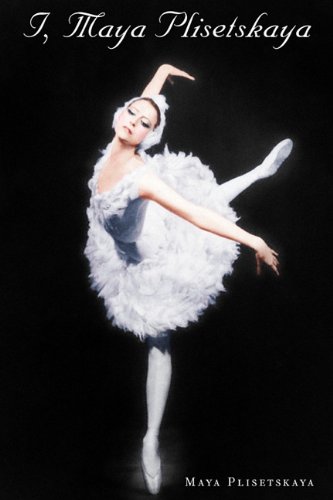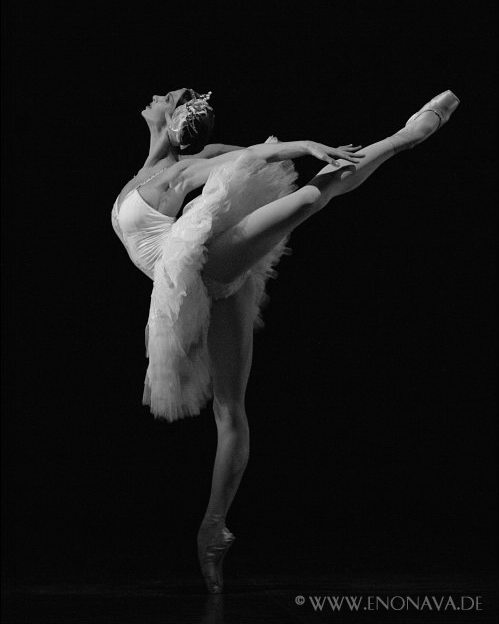Three swans: Part I
I’m planning a several-part series comparing three ballerinas in the lead role in “Swan Lake,” and changing styles in dance and art. I got the idea after an evening of surfing around on YouTube and watching old favorites and new up-and-comers, and marveling at the marvelous opportunity YouTube confers on any viewer who cares to so so to compare and contrast in a way previously only available to documentary-makers and their audiences.
But why bother? After all, who does care? Who cares about ballet, who cares about ballerinas, and above all who cares about stupid tales of maidens under spells who turn into swans and back again, and fall in love with princes in the process?
My answer—besides the obvious: “I do”—is that the stories are not the point. They are merely the vehicles for human transcendence both physical, emotional, and spiritual. To me, that’s the essence of dance, and of most (perhaps all) arts: the combination of technical skill with artistry, and the depiction of some sort of human truth.
I’ll be looking at three dancers from three distinctly different eras, all of them Russian-trained: Maya Plisetskaya (from the Bolshoi under the Soviets in the 40s and 50s; if you do a search on my blog for her name, you’ll find I’ve written a great deal about her); Natalia Makarova (Kirov-trained, defected to the west in 1970, famous in the 60s and 70s); and Polina Semionova (Bolshoi-trained, born in 1984, now with the Berlin State Opera). All are considered great, and I’ve seen all but the young Semionova in person, many times. All are very different from each other, and the point of my series will be to explore those differences and what they say about how art has changed in the last seventy years or so.
First, though, a few more words about that old warhorse which debuted almost 150 years ago, “Swan Lake.” Schmaltzy and preposterous, it’s still an audience favorite because its premise allows some lovely and magical choreography and its music is justly famous. Pretty much a Russian artifact all the way, it’s loosely based on German and Russian tales, the Russian Tchaikovsky wrote the score, and the choreography was split between the Russian Lev Ivanov (the “white” acts) and the Frenchman who lived in Russia for decades, Marius Petipa (the folksy first act and the fiery third, which takes place in court).
There’s a lot of confusion about Odette, the Swan Queen, and her Prince Siegfried. Let’s clear it up right now: the prince does not fall in love with a swan, nor is he guilty of bestiality. He goes out to hunt some swans, sees a flock, takes aim at one, and before his eyes she turns into a swan-woman. She’s a maiden who fell under the spell of an evil magician who decreed that she be a swan by day and a woman by night—and even in human form she still retains some of her swan nature.
Here’s Plisetskaya as the Swan Queen:
Makarova in the same role:
Semionova, likewise:




“who does care?:
I do.
Just saw Giselle (Kremlin State Theatre Ballet Academy (2004), Vladimir Malakhov as Count Albrecht and ballerina Ludmilla Vasileva) on DVD. Had prepared myself to being unimpressed (with the ballet — not with the dancing) after Act I but Act II hit the spot.
Am looking forward to the series.
I do – at least, I will if you write about your passion for the subject.
There are topics that don’t particularly interest me. But, when someone blogs about their passion, it does intrigue me. An example is Sheila O’Malley – she was a working actress who blogged about her experiences. I wouldn’t have thought it would capture my attention, but it did. It brought a slice of life outside of my experience into sharp focus.
So, write about it – use sufficient detail that a novice like me will “get it”.
I’ll read it.
To be passionate about something is healthy. (Obviously there somethings one should not feel passionate about.) I learn about things in the realm of art-music-dance on this blog that would never come to my attention otherwise. I doubt that I will ever become passionate about ballet, but I can appreciate why others are passionate about ballet. Its adult education.
These pictures are code and if you know how to decode them, you have a message from God.
Neo, I just love everything you write about dance. The whole world looks more beautiful through your dance writings. And, let’s face it, every one needs a breath of great art today just to stay sane.
I care.
In a previous life, when I grew up and lived in Manhattan, I used to have Sunday subscription tickets to American Ballet Theater. I was fortunate enough to see the like of Makarova, Baryshnikov, Kirkland, Menendez, and many other fine dancers that I will never forget. To this day I feel I saw some of the best dancing the world could ever imagine. And to this day I feel very lucky indeed to have seen them in their prime. Baryshnikov and Makarova doing the Don Quiote pas de deux and being called back for repeat after repeat as the audience stood and screamed for more, and they did it over and over. What a day that was.
I LOVE it when you post about dance.
Gives me more time to do other things.
I’m interested. I’m somewhat of the same mind as LindaF above: I don’t really get ballet, but I’m intrigued by what the people who do get it see in it, and I always read your posts on the topic. I can’t remember whether I linked to these pieces on my blog on this topic before or not: Oh my goodness am I going to watch a ballet? and I fail to become a balletomane. These are about an experiment in ballet-watching, which ended with me not converted but still intrigued.
Only problem is: can I get control of my ADD long enough to watch the videos I assume you’ll be posting?
Yes please – more dancing posts. I’ve learned a lot from your previous posts on dance and dancers.
I am looking forward to this series.